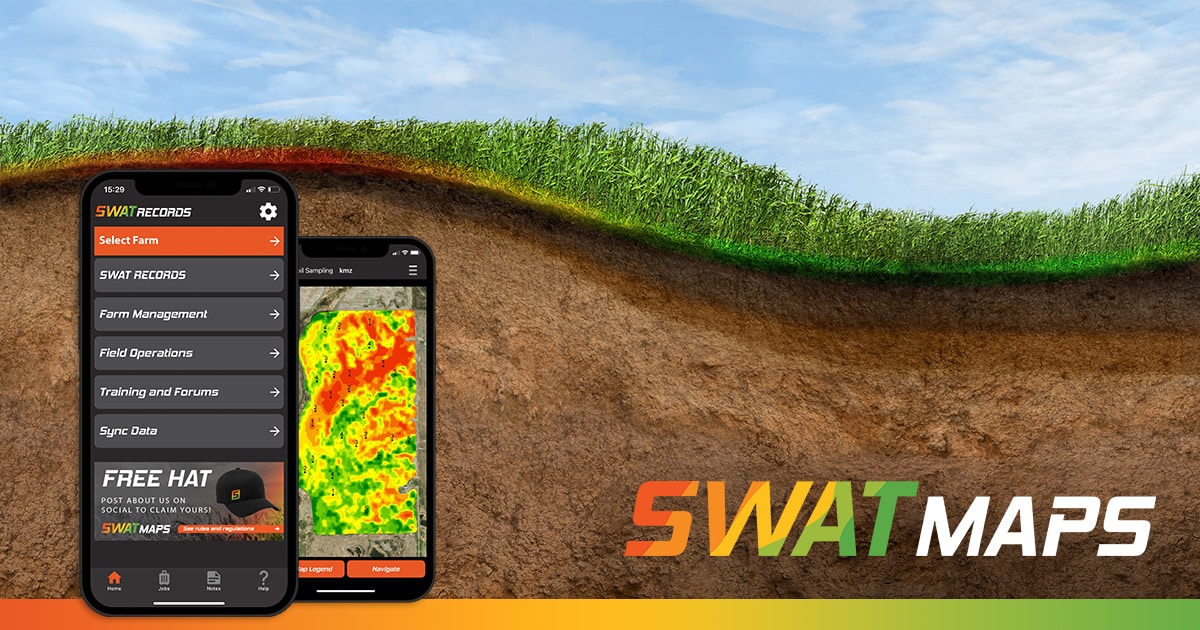5 Ways to Use SWAT MAPS in a Single Season
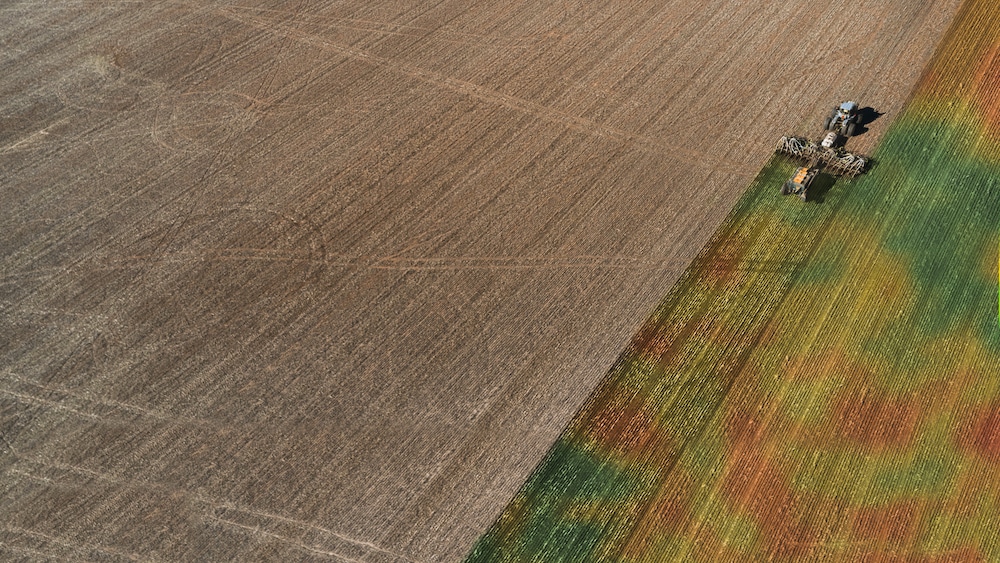
SWAT MAPS are an incredibly useful layer of information to use for a variety of purposes. We often are too focused only on a single application for it – typically the primary fertilizer application. But as any experienced SWAT CERTIFIED agronomist knows, there are a lot of other opportunities that are related to SWAT and its properties. Here’s a list of 5 ways to use a SWAT MAP, using spring wheat as an example.
1. Drainage
Proper drainage in any landscape is fundamental for consistent production. Whether its surface drainage or tile – managing excess water helps reduce the buildup of salts in the soil that lead to salinization and allow crops to thrive even in relatively wet conditions. A SWAT MAP can help identify areas of highest priority in respect to drainage, especially if targeting areas for tile.
For example, there are several types of depressions:
- A. Nice depressions that have good soil structure and are well drained due to sandier texture.
- B. Nice depressions that have good soil structure, but don’t drain as well and are high risk of flooding.
- C. Poor depressions that are saline, due to a high water table.
- D. Poor depressions that are sodic and possibly saline, and never yield well due to poor soil structure and salts.
Given these scenarios, the depression areas to target first for relatively quick ROI would be “B” and “C”. These soils would be delineated separately from the “A” depressions that may not be worth the investment in drainage if they drain well anyway. The “D” soils, on the other hand, may never be worth investing in because in a low rainfall environment without irrigation, improvement of these soils may take decades.

2. Soil Applied Herbicides
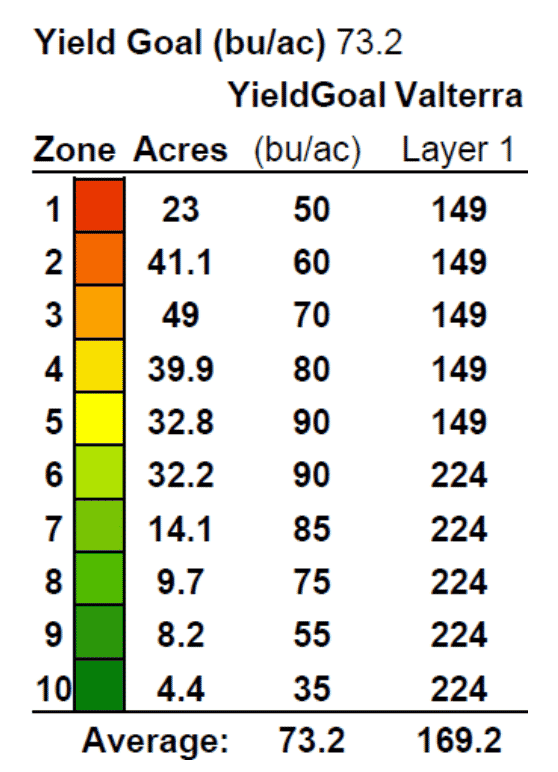
With many herbicide resistant weed issues, proper weed control planning is more critical than ever. Soil applied pre-emergent products play an increasing role in herbicide layering for multiple modes of action. The rates of most of these soil applied products are dictated by soil properties that are mapped and measured with SWAT MAPS. An example would be applying Valterra™ EZ this fall prior to freeze-up, for the control of kochia the following year in spring wheat. In courser textured, lower organic matter zones 1-5, the lower registered rate of 149 ml/ha could be used, while zones 6-10 with finer textured soils, high organic matter, and typically higher kochia populations could get the higher 224 ml/ha rate. This lowers the risk of crop injury in coarse, low organic matter soils, potentially reduces the total amount of herbicide needed, or offers better weed control in areas getting a higher rate – all while using a modest average rate of 169 ml/ha.
3. Variable Rate Fertilizer and Seed
Variable rate fertilizer is often the largest opportunity and can be utilized many ways depending on the crop, climate, short-term goals, and long-term goals. An example of a variable rate fertility and seed plan is shown below where nutrients are allocated based on soil properties and yield potential. Variable rate seed can also be used to achieve maximize potential in every part of the field and help even out maturity by increasing rates in wet soils with higher mortality rates.
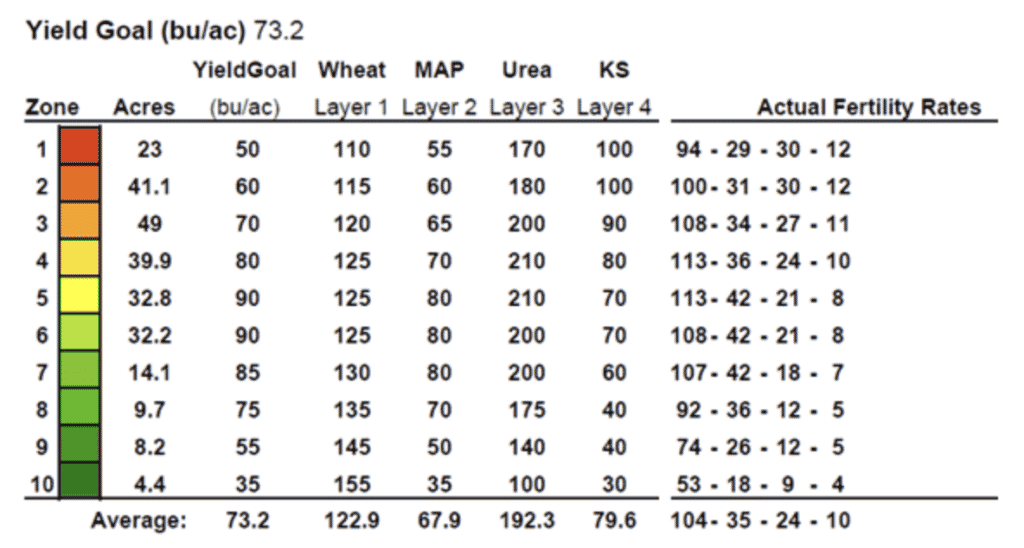
4. Plant Growth Regulators
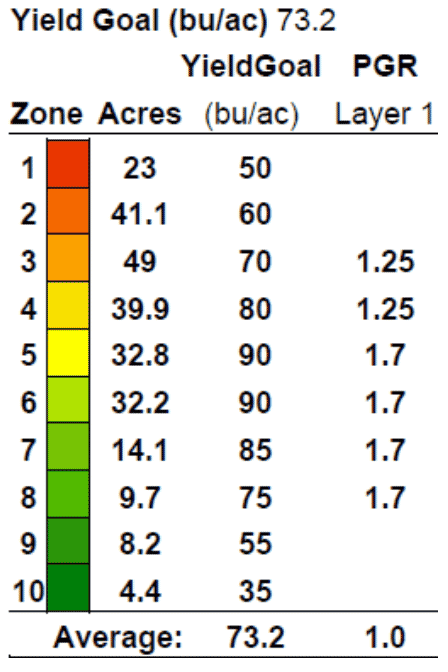
Plant growth regulators (PGRs) are an important tool to manage lodging in many parts of the world. Manipulator (chlormequat chloride) has become a popular PGR used in wheat in western Canada. Given lodging typically is a concern in lower landscape positions with deep topsoils and high organic matter, we could utilize a SWAT MAP to target areas that are specifically highest risk of lodging, and not overspend on low-risk areas. For example, zones 1-2 could get zero rate, zones 3-4 get the lower 1.25 L/ha rate, and zones 5-8 could get the full 1.8 L/ha if they were highest risk. Zones 9 and 10 could also be zero due to salt and/or water stress. This would be very field specific, but the strategy is the same – don’t apply it to areas that are moisture stressed (from both too much or too little water) and have a low risk of crop lodging. In this example, the average rate used would be well below even the lowest labelled rate, or 41% less than the standard rate!
5. Top-dressing Nitrogen
Top-dressing nitrogen is another opportunity to use SWAT MAPS in season. This can be particularly valuable to manage risk when we start the season dry, and don’t want to invest a lot in the crop at sowing time. For example, we could use relatively modest rates of nitrogen in dry zones 1-4 at sowing time assuming it will be dry and not need it, but if it does start raining and improve yield potential in those zones, a top-dress application could be made to take advantage of it. This gets into intensive nitrogen management but can have significant economic and environmental benefits.
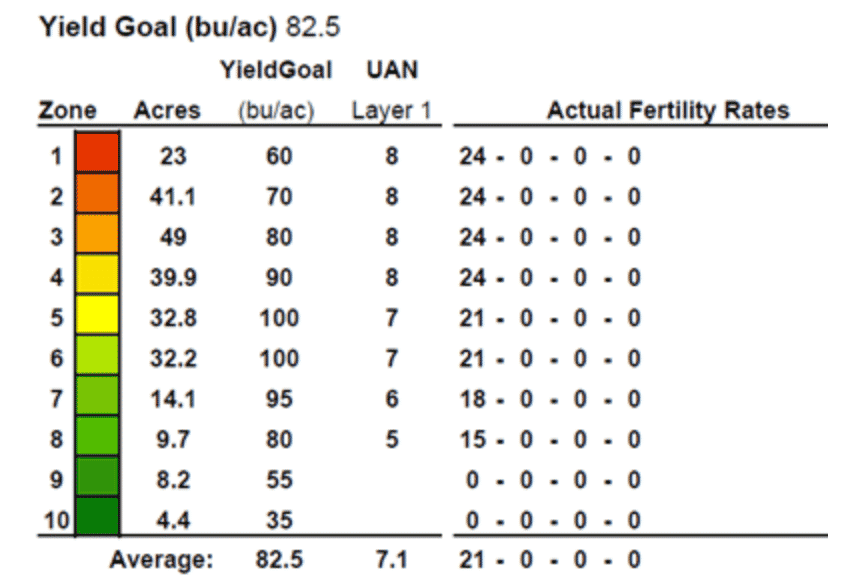
These 5 examples demonstrate several ways in which a SWAT MAP can be used for a single crop, and the cumulative value through just a single season is why SWAT MAPS are the world’s favorite soil potential map.
If you are interested in learning more about the SWAT Ecosystem and how SWAT MAPS can provide value for various applications, visit www.swatmaps.com/products.
Wes Anderson
VP of Agronomy
wes@swatmaps.com







